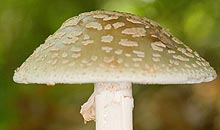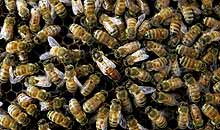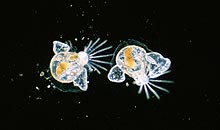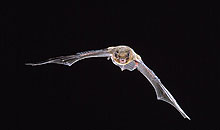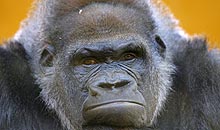The first satellites were launched about 50 years ago as a way to conquer space. Now, satellites are essential for our civilian and military communications. But they remain large and expensive, some of them costing several hundreds of millions of dollars. This is why researchers from the University of Florida (UF) are building small satellites able to work as a team to take multiple and distributed measurements or observations of weather phenomena for example. These small satellites should cost only about $100,000 to produce. The first one should be launched next year by a NASA rocket and should not be larger than a softball. The goal is to mass-produce these satellites to even reduce their costs. But read more…

The picture above shows the expected benefits of multi-satellite systems. (Credit: University of Florida) Here is a link to a larger version of this chart.

And you can see above “a prototype of a ‘pico satellite’ being designed and built in a mechanical and aerospace engineering laboratory at the University of Florida. […] The completed pico satellite, nicknamed SwampSAT, expected to be launched in 2009, will be about the size of a softball. This prototype is slightly larger than a basketball.” (Credit: University of Florida) Here is a link to several other pictures of these small satellites and the man behind them.
This research project has been initiated by Norman Fitz-Coy, an associate professor of mechanical and aerospace engineering. Fitz-Coy is also the director of the Advanced Space Technologies Research & Education Center (ASTREC) established by the U.S. National Science Foundation (NSF) at the UF College of Engineering.
But will these $100K small satellites replace $100M ones? Not at all. “Fitz-Coy said small satellites are not anticipated to totally replace larger ones, but rather to complement them by adding new capabilities. For example, he said, ’swarms’ of small satellites could take multiple, distributed measurements or observations of weather phenomena, or the Earth’s magnetic fields, providing a more comprehensive assessment than is possible with a single satellite. ‘People are looking toward these to not totally replace the big satellites but to supplement what the big satellites are doing,’ he said.”
It’s interesting to note that it’s easier to control large satellites than small ones. Fitz-Coy uses an analogy with cars. “The smaller the satellite, the harder it is to manage its flight path and attitude, or orientation in space — for example, which directions its instruments point, a critical parameter in spacecraft design. ‘It’s similar to you driving an SUV down the road or a sub-compact,’ Fitz-Coy said, explaining that while inertia helps large satellites, it is not enough to keep small satellites on track and properly oriented. ‘The SUV is a lot more stable than the sub-compact.’” Yes, but it costs more…
So what will happen in the short term? The first launch should happen in 2009 “aboard an unmanned NASA rocket carrying other payloads as well. The satellite will fly at an altitude of between 600 and 650 kilometers, or from 373 to 404 miles, and will remain in orbit for several years, Fitz-Coy said. A container that could be standardized for use in transporting the small satellites aboard the rocket also is being developed. As with the satellites themselves, the goal is mass production – to be able to transport satellites to outer space much the same way that ships and trucks transport goods around the terrestrial world now, Fitz-Coy said.”
Sources: University of Florida News, November 13, 2008; and various websites
You’ll find related stories by following the links below.
Roland Piquepaille lives in Paris, France, and he spent most of his career in software, mainly for high performance computing and visualization companies. For disclosures on Roland's industry affiliations, click here.Original here



